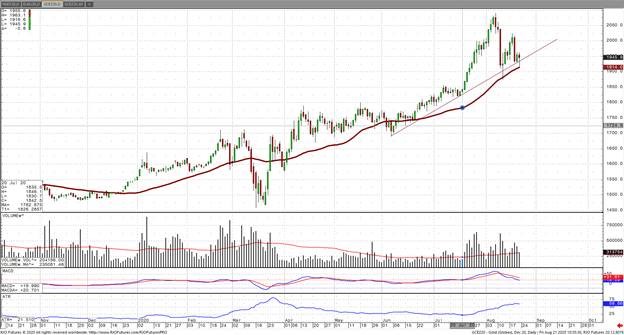
It’s no secret that gold has been extremely volatile over the past few weeks. I look at the recent unprecedented 7 year intraday $120 selloff and think of this day in particular as a “shake the tree and let the weak longs fall to the ground” type of event. It’s simply scaring traders out of positions they want to be in, but the leverage involved is simply too great for emotions to not be a factor. Gold is a crowded trade at this point, but that doesn’t mean it’s wrong. These types of moves in a market where a $40 up or down used to be a “big” move are now seen as the norm. The Average True Range, or ATR, on gold has been lifted from $23 in late July to now $60. This means that the swings expected are $60 on any given trading day. On one standard COMEX 100 oz futures contract this equates to $6000 profit or loss. Traders who are not prepared to stomach those types of moves should be looking at the smaller 10, 33, and 50 oz futures contracts instead of the 100 oz.
If we look at this from a technical perspective gold still trades in a positive trend and should continue to do so as long as dips continue to get bought into. The volume associated with the key support levels of 1900 and 1950 confirm this. Fundamentally the gold market is very well supported as a weak dollar, aggressive “helicopter money” from the fed, and traders in search of safe havens and a better yield continue to support. Consider the fact that the ETF holdings of gold and central banks around the world week after week continue to increase holdings as another very real bullish factor at play. I have been using a combination of futures and options for protection in my trading strategy for gold which is an approach to trading without emotions getting involved in these large swings.



